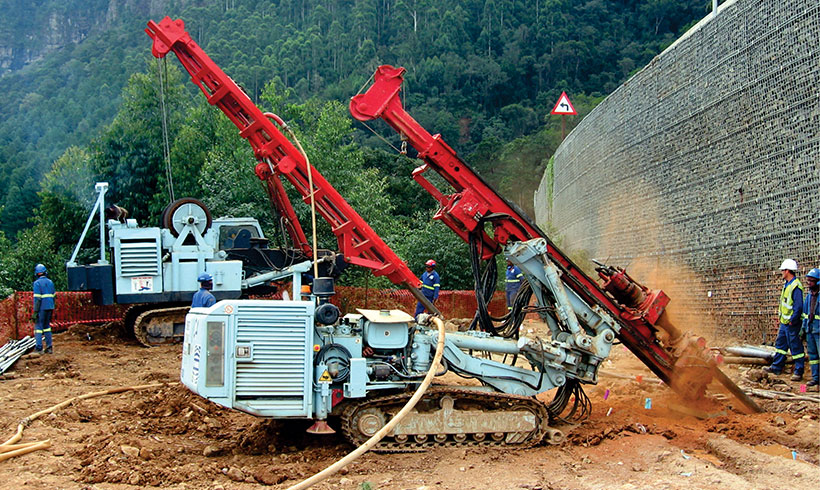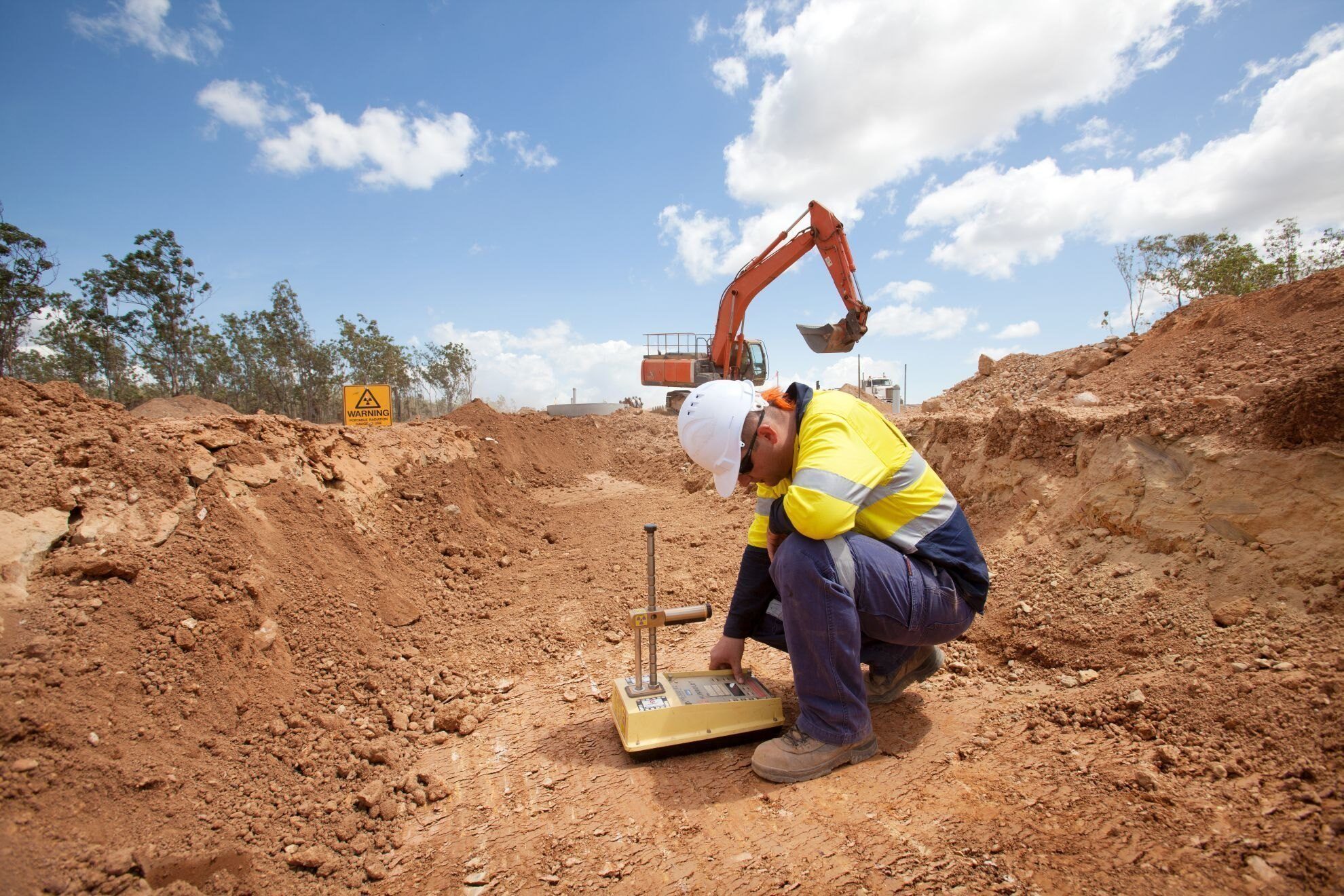The Best Guide To Geotechnical Engineering For Construction Projects
The Best Guide To Geotechnical Engineering For Construction Projects
Blog Article
Geotechnical Engineering For Construction Projects Things To Know Before You Buy
Table of ContentsThe Best Strategy To Use For Geotechnical Engineering For Construction ProjectsThings about Geotechnical Engineering For Construction ProjectsUnknown Facts About Geotechnical Engineering For Construction ProjectsAn Unbiased View of Geotechnical Engineering For Construction ProjectsFascination About Geotechnical Engineering For Construction Projects
Throughout the examination, it is essential to drill at the required deepness and the needed number of holes as per the suggestion of the Canadian Foundation Style standard. Occasionally, the proprietor could save some Geotechnical Examination price but wind up investing more than the anticipated throughout the construction expense.The responsibilities of the geotechnical specialist involve giving product screening for construction support. Geotechnical Engineering for Construction Projects. Geotechnical designers evaluate all the field examination reports to make sure that building and construction is going on according to the job requirements. Throughout building and construction, a confirmatory examination for soil compaction is done on-site to guarantee that no future negotiation happens
After the concrete is put -7 days and 28 days- examinations are carried out on concrete examples accumulated from the site to ensure that the concrete put satisfies the style standard. Asphalt core is taken after the Asphalt is laid and compressed to validate that it fulfills the design standard. All research laboratory test records are evaluated by the Geotechnical Engineer to ensure that it meets the project spec.
Our Geotechnical Engineering For Construction Projects Ideas

Geotechnical design plays a crucial duty in guaranteeing the stability of building and construction jobs. Geotechnical design is an important branch of civil design that focuses on recognizing the behaviour of earth materials, such as soil and rock.

For a reputable structure and a smooth building procedure, depend on to offer the competence you require. Get in touch with to obtain professional suggestions and geotechnical services customized to your next project.
Facts About Geotechnical Engineering For Construction Projects Revealed
When embarking on a land growth task, comprehending the ground beneath your feet is as crucial as the frameworks you plan to develop above it. Our Geotechnical Design team analyse the ground, guaranteeing it appropriates for the proposed development while providing you with the information required to satisfy your project goals.
Geotechnical Engineering considers the development of the ground, as it is the foundation for all projects. Where frameworks require to be developed with regard to the ground problems; ground conditions (e.g., soft ground) might need enhancing depending upon the dimension of the designated framework. Before building, you need to understand concerning the groundwater, soil framework, check these guys out and liquefaction chance of your land.
For sites that are not connected on the neighborhood authority framework added site examinations would certainly be required to give technical inputs for on-site stormwater and wastewater. We have actually experienced Geotechnical Engineers based in each workplace, supporting your geotechnical demands across the country. Connect to us to talk about exactly how we can support your following task.
These records are customized to satisfy the certain demands of a project and include design specifications and advice for the building and construction of a variety of synthetic structures. In addition to providing working as a consultant solutions covering areas such as slope stability and load-bearing capabilities for various products, these designers take on r & d tasks to improve next methods, equipment, products knowledge and evaluation covering entire lifecycles.
The 2-Minute Rule for Geotechnical Engineering For Construction Projects

Prices of pay normally enhance as your knowledge and abilities grow, with guidelines directing to a graduate beginning income of in between 18,000 and 28,000 per year in the UK. This climbs to 26,000 to 36,000 with a few years of experience and then getting to 40,000 to 60,000+ visit our website for senior, legal or master designers.
However, with the best application it is feasible to grasp the career and gain entry to a tough yet fulfilling and vital job. A geologist would need to re-train to come to be a geotechnical engineer, although there is plenty of cross-over in between the two professions, which can make this easier - Geotechnical Engineering for Construction Projects. Rock hounds need to have an understanding of soils, rocks and various other materials from a clinical point of view, while geotechnical engineers tale their knowledge of issues such as dirt and rock technician, geophysics and hydrology and use them to engineering and ecological jobs
When starting, these engineers will often tend to deal with much less intricate jobs, constructing up understanding and experience ready for more challenging work later on. Geotechnical engineers have a tendency to be experts in particular areas as they grow in experience, focusing on particular facilities such as trains, roads or water. These engineers additionally function with renewable resource, offshore and onshore oil and gas, nuclear power, and a lot more.
Geotechnical Engineering For Construction Projects - An Overview
The time taken to come to be a geotechnical designer depends on where you are based, where you research and what degree of education and learning you desire to acquire before getting in the workplace. Generally-speaking it takes 3-4 years to reach the basic needs to begin an occupation as a geotechnical engineer.
These operations enable professionals to assess a host of dirt technicians consisting of weight, porosity, void-to-solid fragment proportion, permeability, compressibility, maximum shear strength, bearing ability and contortions. If the structure requires a deep foundation, designers will certainly use a cone infiltration examination to approximate the amount of skin and end bearing resistance in the subsurface.
When evaluating an incline's balance of shear tension and shear toughness, or its capability to withstand and go through motion, rotational slides and translational slides are typically taken into consideration. Rotational slides fall short along a bent surface area, with translational slides happening on a planar surface. A professional's goal is to establish the problems at which an incline failure can happen.
Frequently, findings recommend that a site's dirt ought to be treated to enhance its shear toughness, tightness and permeability before design and construction. When it comes time to lay out foundation strategies, experts are progressively concentrated on sustainability, even more especially exactly how to decrease a foundation's carbon impact. One tactic has been to replace 20 percent of a structure's cement with fly ash, a waste item from coal fire power plants.
Report this page